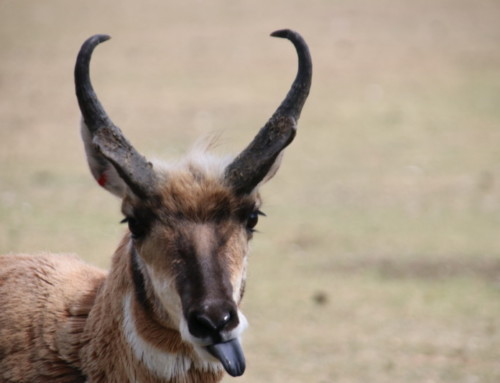Meerkat
I am a little Meerkat
Standing tall and proud
Looking out for my family
And always in a crowd.
By AliKat33 (via Pinterest)
Interesting new additions to the Saskatoon Forestry Farm Zoo are Meerkats, Suricata suricatta, which is Latin for Syria Cat, although they are exclusively found in the southern and western parts of the African continent. They are in the order Carnivora in the Mongoose (Herpestidae) family, not cats. The name Meerkat is from the Dutch (Africaans) and means Marsh Cat – neither of which actually applies to this species. Unlike other species of the Mongoose family, they are incredibly sociable and live in large, cooperative family groups in the semi-desert plains. Their habitat is the arid scrubland of the Kalahari desert ranging from Angola through five different countries down into South Africa. Conditions in the Kalahari are quite extreme with daytime temperatures in the summer up to 40 degrees C with a sand temperature of up to 70 degrees C. Winter night temperatures can be as low as -10 degrees C. There is little rainfall which comes usually between January and April, after which vegetation grows and the desert becomes full of plant life leading into the cooler winter months.
Adult Meerkats range in body length from 25 to 35 cm long with a tail nearly as long. They weigh around 600 to 975 grams. Their bodies are covered with fur that is light brown or sandy in colour with eight dark stripes on the back, a black-tipped tail and dark markings on their sides that are unique for each animal. They have long, pointed muzzles with a black nose and black mascara-like markings around their eyes. Their front claws are long and sharp enabling them to dig the tunnels that they live in and to dig for the small insects and other creatures that they eat.
The Meerkats stay together in family groups ranging in size from 10 to 30 or so. There may be up to three family groups in a pack. They care for their young cooperatively and some keep watch while others are off foraging for food. Young are born after about 11 weeks and there are usually two to five kits in a cozy, grass-lined chamber in the burrow. They are high energy animals and may lose as much as 5% of their body weight overnight, so they must be on constant duty to find food. Foods include insects, arachnids, centipedes, millipedes, small reptiles and rodents, bird eggs and some plant material. Food items are found by digging in the grass and soil and turning over rocks. During rainy days or days with extremely hot temperatures they will not emerge from their burrows.
Living in large groups provides them with safety in numbers and having a few individuals always on watch duty to sound the alarm keeps them alert to predators. Their main predators are birds of prey and snakes. In places where they are in close proximity to humans and cattle they are susceptible to bovine diseases and rabies which can affect whole populations in an area. Fights between packs can also lead to injuries and death. Otherwise, their lifespan in the wild can be up to ten years, longer in captivity.
Meerkats are listed as being of Least Concern with regard to becoming extinct although severe conditions in any one area may lead populations to decrease locally.
For further information see: https://a-z-animals.com/animals/meerkat/ or http://www.meerkats.net/info.htm

